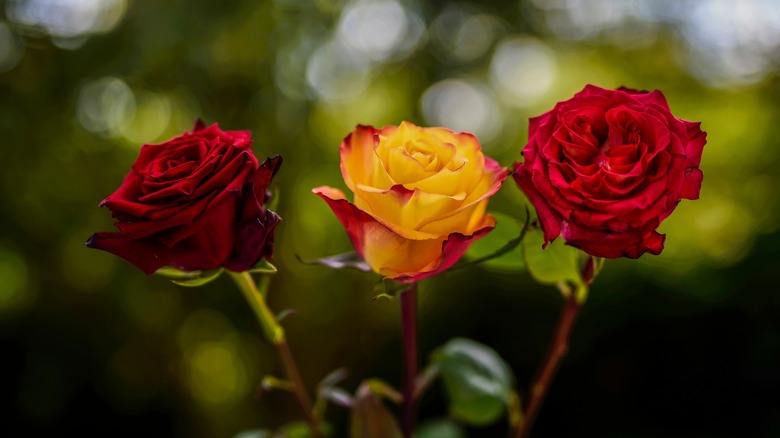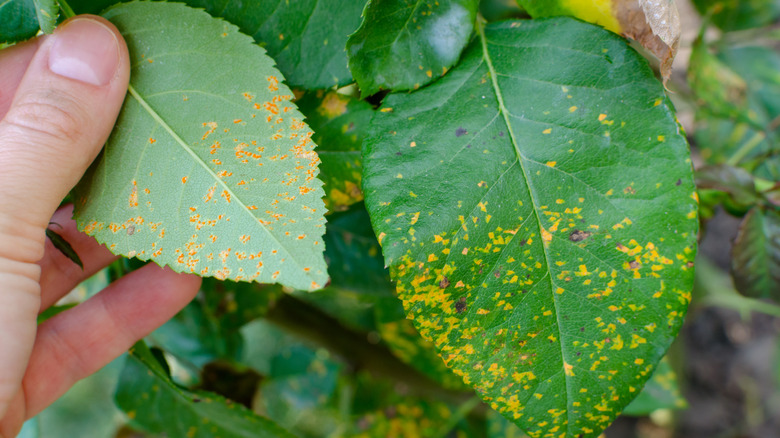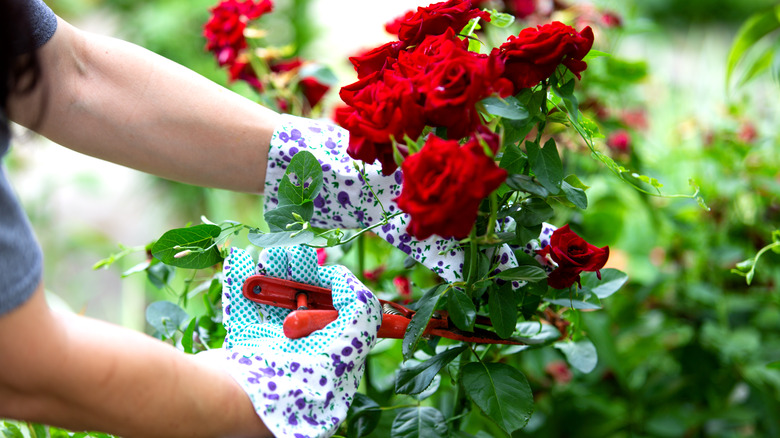Plant Rescue: What Rust On Roses Looks Like And How To Save Them
Roses are a source of enduring fascination for humanity. The flowers are rich with symbolism, inspiring ancient Christian tales, Greek Myths, and literally setting the standards of the infamous War of the Roses for the crown of England. According to University of Illinois Extension, gardening with roses most likely began in China five millennia ago. Long associated with love and beauty, the word rose is said to come from the Greek goddess of beauty, Aphrodite, who moved a single letter in the name of her precious son, Eros, to give the flower its name (via University of Missouri). Cleopatra allegedly used rose petals and a fountain of rosewater to seduce the Roman general Mark Anthony, and King Nebuchadnezzar of Persia slept on a mattress filled with rose petals!
Over the years, our obsession with roses has led to new varieties that have adapted to succeed in many different environmental conditions. This does mean an even higher chance of finding a plant that will thrive in your garden, however, less than ideal conditions can make your rose plants more susceptible to disease. According to the Old Farmer's Almanac, when choosing a site for roses, it's important to not overcrowd the area, and to make sure that the plant will be able to get a minimum of 6 hours of direct sunlight a day, ideally in the morning, so any excess moisture from dew or rainfall can dry quickly.
How to tell if your roses have rust
Rose rust is caused by fungi from the genus Phragmidium, which only grow on plants from the genus Rosa, according to University of Wisconsin-Madison. Fungal infections generally favor damp conditions, and rose rust is no exception. Spores require 2 to 4 hours of contact with plant tissue to penetrate, and they are only able to do so effectively when the surface of the plant is wet and temperatures fall around 65 to 70 degrees Fahrenheit, explains Penn State Extension.
In damp and cool areas, new rose rust infections can be first noticed as yellow spots or curling on lower leaves, but will move on to infect the rest of the plant eventually. As it worsens, powdery orange or black spots will develop on the underside of leaves opposite where the yellow spots are forming on top. These powdery spots are called pustules, and they contain the spores of the Phragmidium fungus. If the stem (often referred to as the cane) of the rose plant is affected, the disease can cause distortions, curling, or other growth irregularities to occur, as well as the characteristic orange pustules.
How to get rid of rust on roses
If one or more of your rose plants is infected with rust, and you don't use pesticides in your garden, you must immediately remove any affected parts of the plant. Rose rust can grow on every part of a rose except the roots and petals, so this could mean a small trim or a large amputation. The plant material should be burned if possible, and you should take care to collect and destroy any fallen rose leaves each autumn to rule out the possibility of spores surviving in your garden over winter (via Royal Horticultural Society).
The best way to tackle rose rust is to prevent it taking hold in the first place. Many cultivars of roses are more or less sensitive to the fungus, so there's a good chance that by simply switching to a more rust-resistant rose, you'll avoid the problem altogether. Other best practices focus on maintaining sufficient airflow around your roses, making sure to water in the morning, and keeping the plants well spaced from each other to minimize the chances of the fungus gaining a foothold. Mulching and watering the plants via drip irrigation can help reduce water usage. Drip irrigation systems get water directly to where plants need it, reducing the risk of moisture-loving diseases such as rose rust, notes The San Diego Union Tribune. If you do want to use chemical fungicides, per Clemson Cooperative Extension, the most effective options for controlling an existing fungal infection include myclobutanil or propiconazole.


